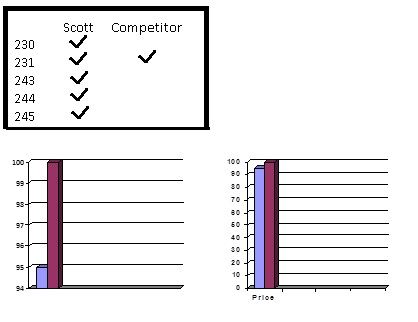
There is a lot of grey area in advertising. Let me give you some examples.
Example 1. I saw an ad from a stamp dealer. Pictured in the ad were older US stamps in mint condition. The ad mentions about buying these stamps for a few dollars. When you read the ad though, it says that you’ll receive used copies. Wait a minute! The ad illustrates mint copies but says you’ll receive used copies. Is that right?
If the ad showed dollar value Columbians for a few dollars, to me, that ad is deceiving. I feel it’s downright criminal to do that.
If the ad shows mint stamps that are similar to the used stamps you’ll receive, I think that ad is misleading. Technically and legally, the ad did nothing wrong because it clearly states “used stamps.” But the advertiser is utilizing more attractive mint stamps to draw the buyer in. To me, it’s a grey area. They aren’t lying. But they aren’t being 100% up front either.
If the ad shows used stamps similar to the stamps you’ll receive, that ad is truthful. But how many people would respond to an ad like this? Not many. Pictures of mint stamps make the offer more appealing. Collectors like pretty stamps. Used stamps are not always very pretty.
Example 2. Comparison ads (see image below). Suppose there are two dealers: myself and dealer A. I run a comparison ad that shows a full set of mint Columbians in the list. I put a checkmark under my column on every Scott number. Dealer A has the 2˘ value only, Scott #231. But it’s an inexpensive stamp. Most dealers have Scott #231. The ad shows that I have lots of stamps. My competitor only has one inconsequential stamp. Therefore, I look better. Did I forget to tell you that dealer A has a full set of Trans-Mississippi issues, Scott #285-293 but I don’t have any? As the person writing the ad, I get to twist the truth into making you believe that I have a better selection of stamps compared to dealer A.
Comparison ads are nothing more than the company manipulating the facts to make themselves look better than the competition. Reality may be very different.
Example 3. Ads with charts. I have a mint #C18 that I sell for $95. My competitor sells the same stamp for $100. Which of these bar charts (see below) is more favorable to me?
Both charts show the same data, my price of $95 and my competitor at $100. The difference is the baseline. The chart on the left, the base price is $94. The chart on the right, the base price is $0.
The chart with the $94 base price makes my price look much lower than my competitor.
Charts can be twisted to make whatever point you want to say. They can be misleading.
Example 4. Statistics are easily manipulated. This is closely related to Example 3 with the bar charts.
I’m a dealer with 100 customers. I add 10 new customers per month to my customer list. Another larger dealer has 1000 customers. They add 20 new customers a month.
I put out an ad that says, “Scott Shaulis is the fastest growing stamp dealer in all of Stampdom.” Is that true? It depends on your prospective.
Technically, I’m adding 10% new customers per month. My competitor adds only 2%. Again, because I’m writing the ad, I can make it sound better for me. I’m not lying. I choose to look at percentages to stake my claim. If you use new customer count only, then I’m not the fastest growing dealer. Beware of ads that claim things like “fastest”, “largest”, and other vague terms.
Example 5 Customer satisfaction ads. I can say something like this, “Four out of five customers are satisfied with my services.” You think that 80% of the customers who deal with me like me. Ah, but that’s not what I said!
I said, “four out of five.” You could take a million customers and if 999,996 of them hate me, my ad is still correct. I only told you “four out of five.” I didn’t tell you which four! I biased my sample by picking the four people who like me. I brought in one person who hates my guts to make it sound like I’m being “fair and impartial.”
Example 6 Price changes. Let me use Scott #C18 again. I write an ad that says, “The suggested retail price is $1000. But if you agree to buy it in the next 30 minutes, your price is just $99.” Wow, you’re saving over 90% off the retail price! I can pick any price I want as the suggested retail price. The trick here is to sell the stamp at a healthy profit, but make the buyer think they are saving a ton of money. The truth is, the customer is not saving anything. When I see “suggested retail price,” I ask who is doing the suggesting! You should only compare dealers based on actual cost. If I sell the stamp for $99 and someone else offers the same $99 stamp with a “suggested price” of $1000, are you really saving 90%? No.
The truth is that ads always make the person placing the ad look better. My prices are lower. I have more selection. My stamps are prettier. Buy from me and I’ll save you a ton of money. And so forth. This doesn’t happen with just stamps. Ads like this can be found in many businesses.
Well-crafted ads take a lot of work and understanding to portray the message you want to make on your potential customers. My suggestion to you is to not be fooled by ads. Now that you understand some of the tricks, you know what to look for. Make informed buying decisions based on your own judgment.
